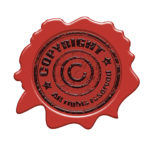Conference planners have long relied on written descriptions to sell educational content to potential attendees. And attendees use the same blurbs to make decisions about which sessions to attend.
But meeting sessions aren’t delivered in book format, so why would planners confine their descriptions to text? With so many platforms available to deliver session descriptions, there is no reason to ignore the power of video. To that end, media and marketing expert Andrew Davis, the author of Brandscaping: Unleashing the Power of Partnerships and a frequent conference speaker, recently shared tips on how speakers can create effective session promo videos.
1. Get attendees excited about the conference.
If speakers want people sitting in their sessions, they need people to attend the conference. It’s important, Davis said, that a speaker’s video be relevant to an entire potential audience, not just to whoever may attend that particular session. The video should open with a sense of urgency and excitement that will drive potential attendees to register if they are still on the fence.
2. Give attendees a taste of the session.
Once attendees are excited about the benefits of the overall event, it’s time for speakers to zero in on their own content. But a speaker should resist the urge to just read a session description while looking into a webcam. “A good promotional video is more than a description of your session,” Davis said. “Give them a taste of what you’ll present and how you’ll present it. Tease them with real content.” The goal is to make attendees want to hear the rest of the story.
3. Tell attendees what they will gain from the session.
Once attendees have seen a sample of a speaker’s session, the video should let them know exactly what new knowledge or skills they will have gained when they walk out. If speakers intend to give away incentives such as books, whitepapers, or other “prizes” during their session, they should be sure to mention that in the video. It could be the very enticement someone needs to make that final decision to attend.
4. Leave them with a call to action.
Don’t end with a generic “Hope to see you there!,” but instead give a clear call to action. The speaker should promote the entire event one last time, encouraging viewers to register immediately if they haven’t done so already.
Creating a video is more work for the speaker, said Davis, who estimates that it takes him about an hour to create a promotional video for a session. To get speakers on board with creating session promo videos, it’s best to start early. When asking for speaker proposals, make a one-minute video pitch part of the submission process. You also could include making a video as part of your speaker contract.
To help ensure quality, give your speakers an outline of what should be included in the video, and clearly define the preferred length and required format. Include advice on the best ways to shoot a good video, such as lighting, sound, and makeup tips.
But it’s to speakers’ own benefit, he said, to get people talking about their presentation in advance, and potentially recommend the session to other attendees. And, Davis added, “It goes a long way to show potential leads for speaking engagements that you’re a partner to making their event a success.”



